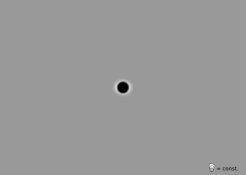Well, good luck. My understanding is that about 150° is pretty much the limit and even that is questionably practical.
My thought is that if you view a circle from the front dead center, it appears to be a circle. As you tilt it so you are no longer looking at it on axis, it becomes less circular, and the more you tilt it the greater the ratio of the length of the ellipse to its width becomes. As this becomes very extreme, the ellipse becomes more like a straight line to the eye and less like a two dimensional shape. At 180°, you'd be looking at the edge of the plane the circle is inscribed upon, and you wouldn't even see the circle at all!!
Additionally, there are two other factors in play here. First, as the view from points on the image plane get farther from the axis, the difference between the axial circle and the off - axial ellipse represents "lost" light. The hole is actually getting smaller (in its area) in relation to the image plane. And of course, the distance from pinhole to film becomes progressively much greater with that extreme geometry. Remember that the intensity of the light varies inversely to the square of the distance from the source. So the light fall off will be extreme, and probably, regardless of the amazing feat of getting a great wide angle, would be impractical.
Unless you get the making of the pinhole down to where the material is extremely thin, you are making a tube, which further limits your ability to achieve a wide angle. One reason I like the idea of using a front surface mirror is that the material deposited on the surface can be far thinner than any piece of metal you could possibly use.










